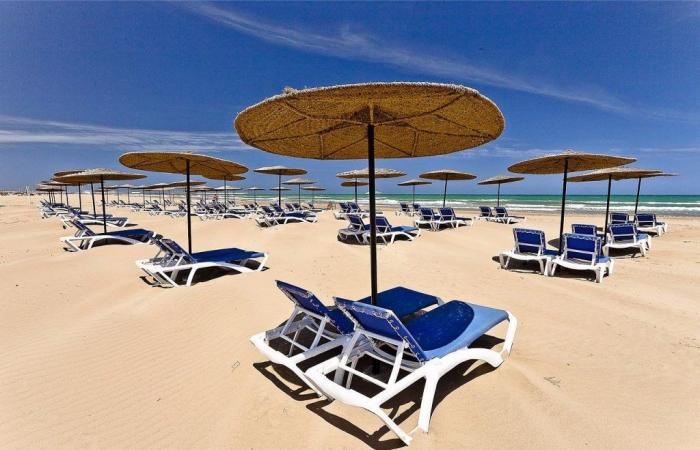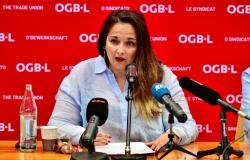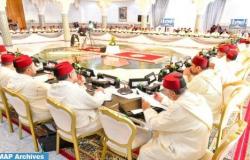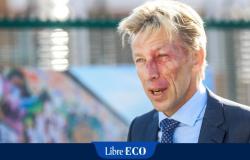The re-election of Youssef Zaki as head of the Oriental CRT is an opportunity to take a look at the general state of tourism in the region, its ups and downs, as well as the actions likely to reposition the territory in its rightful place in the national tourist landscape…
Certainly, the Oriental region has great multi-product tourism potential and a unique diversity of its landscapes, but this potential remains underexploited due to several persistent challenges.
The most worrying challenge is undoubtedly the predominance of tourist seasonality, marked by summer holidays. Professionals in the sector suffer from a late start and early end to the summer season, which has a serious impact on their business. Outside of summer, key destinations like Saïdia and Marchica have difficulty attracting visitors.
The region also suffers from a lack of entertainment and events throughout the year, which puts it at a disadvantage compared to other coastal cities. Another problem: Internal and external air connections are limited, making access difficult.
In addition, the Oriental region has difficulty attracting investors in tourism, due to this restrictive seasonality, the lack of attractive activities and the tourist offer which remains to be developed, despite the sacrifices made.
To meet these challenges, professionals are calling for a rethink of the tourist offer to diversify it and adapt it to the seasons, by exploring new sites beyond the coast. With innovation and new low-cost air links subsidized by the ONMT, the region could become an attractive destination all year round.
Indeed, and to compensate for this, the CRT de l’Oriental continues its concerted efforts to mitigate this impact and promote sustainable tourism throughout the year.
In this context, the Council took the initiative to diversify the tourist offer in order to reduce dependence on the summer seasons. One of the key strategies is to transform Saïdia, the renowned seaside resort, into an attractive destination all year round. In collaboration with the Marchica Med Agency, the CRT develops the tourism potential around the Nador Lagoon, aiming to create unique experiences that attract visitors even outside the peak summer season.
To boost off-season tourism activity, the CRT is also focusing its efforts on sports tourism. It plans to build a world-class complex capable of hosting national and international teams for training courses and competitions. In addition, the organization of high value-added events before and after the summer is envisaged, aimed at extending the tourist season and stimulating the local economy.
Local stakeholders emphasize the importance of diversifying the tourist offer beyond seaside attractions. They encourage the exploration of the region’s natural and cultural riches, such as the desert, mountains and natural parks. This approach aims to attract a continuous flow of visitors throughout the year, by offering authentic and varied experiences.
A concrete example of this strategy is the “Desert Train”, a niche tourism product allowing visitors to discover the spectacular landscapes of the southern Oriental, along a 350 km circuit. This initiative aims to diversify attractions and attract lovers of adventure and discovery.
Despite these advances, we cannot repeat enough that the air limitation hinders easy access to the region outside of the summer season, which represents the priority obstacle to attracting diversified and constant tourism.
Although these pitfalls are significant, Youssef Zaki, recently re-elected President of the CRT of the Oriental, is not giving up. The Council has in fact put in place an ambitious action plan to promote the region and diversify its tourist offer over the period 2023-2024, the main characteristics of which are as follows:
1. Creation of campaign concepts and audiovisual content for the promotion of the region on social networks and search engines, at national and international level.
2. Specific digital communication campaign for the flagship seaside resort of Saïdia, in order to bring it out of its seasonality.
3. Communication campaign dedicated to domestic tourism to attract Moroccan visitors throughout the year.
4. Organization of press and familiarization trips (eductours) for international influencers and journalists in the region.
5. Setting up an event around the rock engravings of Figuig, to promote this unique heritage.
6. Organization of a roadshow in 3 stages to connect local professionals with international travel prescribers.
7. Creation of more than 250,000 words of new text content to enrich the region’s digital platforms.
8. Support for small professionals in the digitalization of their tourist offers (social networks, websites, etc.).
9. Production of a digital guide to marketable tourist offers in the region, as well as a B2B commercial kit.
10. Daily management of social networks (Facebook, Instagram, TikTok, YouTube) with varied content (videos, photos, competitions).
11. Production of video capsules and professional photographs to support communication.
12. Development of a mobile application dedicated to the Oriental region.
Also noteworthy, in this register, is the commendable development and support action deployed by the Saïdia Development Company (SDS) to develop the Saïdia Resorts tourist resort, which regularly launches calls for projects as part of the “Madaëf” program. Eco6” to support entrepreneurship and innovation in areas such as sustainable tourism, soft mobility, shops and catering at Saïdia Resorts. It also has the merit of diversifying the hotel offering with new concepts, such as the Radisson Blu Residences opening in August 2023 which offer apartments and studios for families in a Bed & Breakfast formula, in addition to All Inclusive hotels. In total, the units owned by the SDS represent 750 rooms and more than 2000 beds.
In this way, its objective is to make Saïdia Resorts a tourist destination of choice all year round by targeting different segments of national and international visitors, thanks to a diversified offer and events. It is undeniable that the territory does not lack assets to move forward with serenity. First, in terms of bed capacity, the Oriental region has 147 hotel establishments and more than 13,700 beds, 60% of which are located in the seaside resort of Saïdia. The latter also offers many other accommodation options in abundance, especially all-inclusive stays for family tourism in addition to water and leisure activities. Especially since its excellent connection to the highway allows easy and quick access. Thanks to this solid and diversified infrastructure, the eastern region strengthens its tourist attractiveness and greatly facilitates access and travel for visitors between its different attractions. Moreover, the destination is distinguished by an excellent road network and has three airports. It also has five new generation railway stations distributed in different departments, greatly facilitating travel and travel within and outside the region. It is also home to a large Mediterranean port which should be operational by the end of 2024.
Just a reminder. The tourism roadmap for the Oriental region has identified 9 tourist sites for an intervention program with a total cost of 457 million dirhams, aimed at promoting sites like Figuig, Debdou, Gafait, Ain Almu, Tafoughalt , the Mohammed V dam, the Cap de l’eau, Boudinar, Barkine and the spa resort of Fezwan.
However, critics point out that tourism does not yet fully benefit the local population and that tourism activity remains an Achilles heel in the region. The contribution of private actors to tourism promotion is also considered insufficient…






